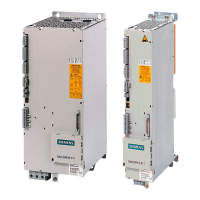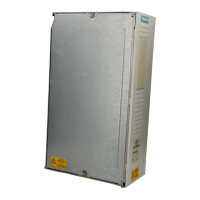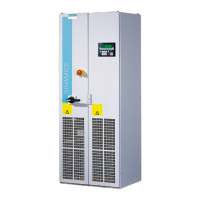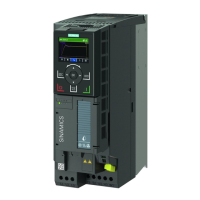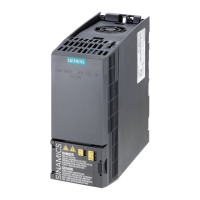Description 01.04
3-4 SIEMENS AG 6SG7000-0BA76
SIMOTRAS HD Operating Instructions
3.3.3 Speed control by changing the rotor resistance levels
The torque can be influenced by switching on an additional ohmic resistance in the rotor circuit in
the asynchronous motor. To do this, however, an asynchronous machine with a slipring rotor is
required. Starting with the characteristic curve for a squirrel-cage motor, the gradients of the speed-
torque curves increase as the resistance in the rotor circuit increases. The level of the pull-out
torque M
K
remains constant.
This means that at a specific load torque M
L
, the various constant speeds n
2
, n
3
or n
4
can be set. If
the load changes, the speed increases as well.
n
N
n
M
M
0
M
L
M
K
n
2
n
3
n
4
s = 0
s = 1
Motor torque
E.g. constant
load torque
Breakdown torque
Speed
Motor characteristic of a
short-circuit rotor motor
Motor characteristic curves
at various rotor
resistances
Figure 3.3.3.1 Speed-torque characteristic curves at different rotor resistances
When changing the speed using additional rotor resistances, the
Rotor output P
2V
= rotor power input P
d
* slip s
is largely converted into heat in the external resistor. This prevents excessive heating of the motor
when running for extended periods at low speed.

